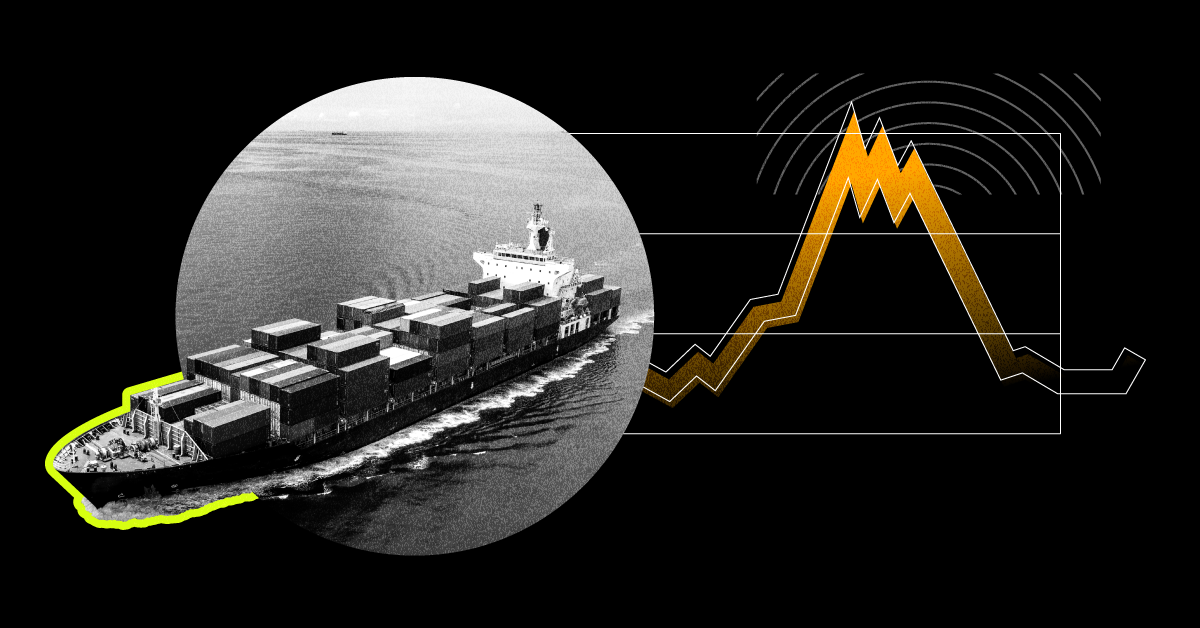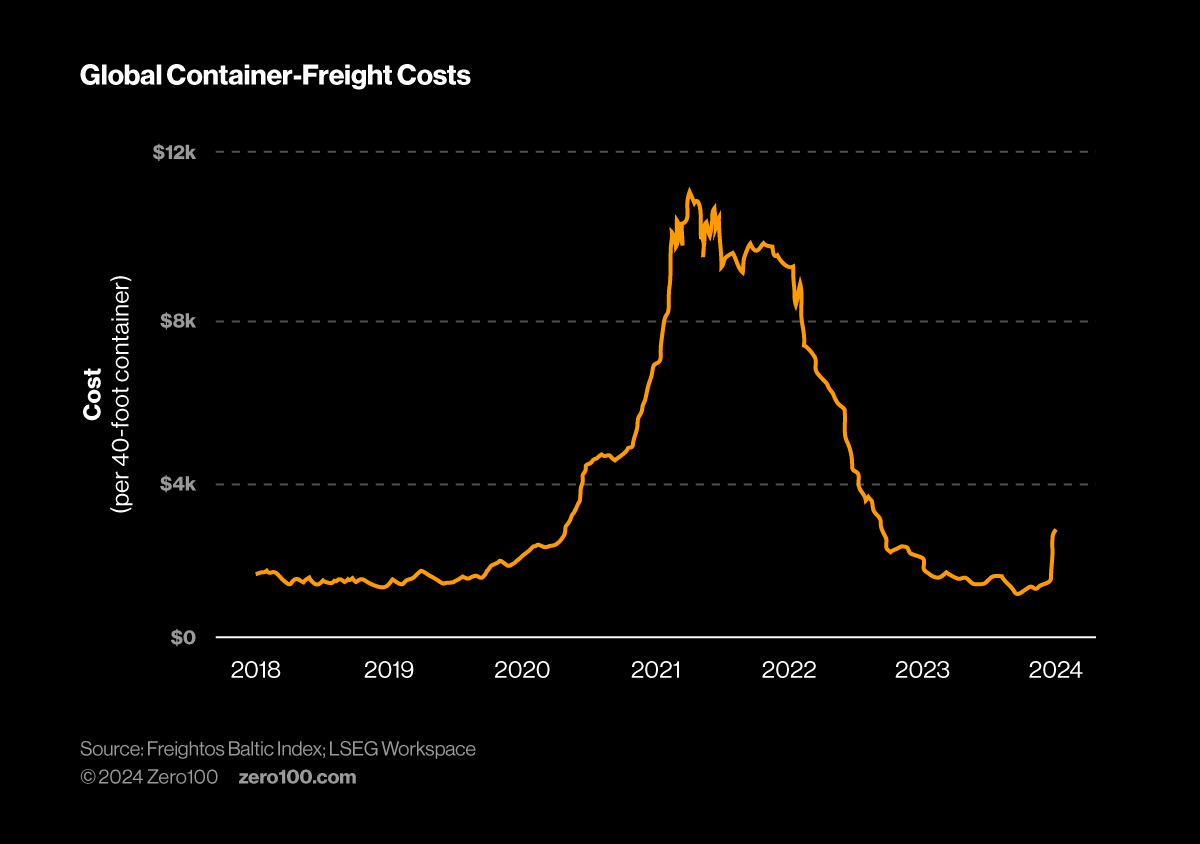
The Red Sea Crisis Is a Red Herring for Supply Chain
The Red Sea Crisis is not cataclysmic, despite the alarmist headlines. Supply chain resilience post-Covid is deeper than many people realize, but the importance of rigorous, data-driven thinking about our physical supply network will be critical for the future.
Houthi rebels launching attacks on commercial vessels in the Bab al-Mandab Strait connecting the Red Sea and the Gulf of Aden have been all over the news lately. Alarmist headlines from traditionally sober outlets like the New York Times and the FT fret about “soaring shipping costs” and “chaotic” times for European manufacturers and retailers. Less measured newspapers like the New York Post go even bigger, shrieking, “Red Sea attacks hike shipping costs by 600%,” which their crack economics reporters surmise risks “prolonging inflation”!!!!
Really?
Crisis Management in a Post-Covid World
Yes, some companies have been hit by parts shortages (Tesla in Berlin, Volvo in Belgium), and some have signaled possible price or availability impacts (IKEA, Tesco, Marks & Spencer). Traffic through the Suez Canal is down 40% from January 2023, but so far, the “crisis” has been anything but cataclysmic.
Container rates from Shanghai to Rotterdam, for example, are only up around 40% since January 4, 2023, which is nowhere near the spike we saw during the pandemic. And, of course, there are other ways to go, including around the Cape of Good Hope, east through the Pacific, over land from the Persian Gulf to the west coast of Saudi Arabia, and by air. The costs (including skipping Suez toll charges) and time in transit are different for each option, and prices are volatile, but it’s basically just a big math problem, and success depends on solving it quickly and constantly.

Zero100 hosted a flash roundtable this week with 14 logistics executives from retail, CPG, industrial, apparel, and luxury brands to get into the details of what’s really happening. The key takeaway from this 60-minute session is that none of these companies have yet paid any surcharges on shipping because all had reacted immediately to the initial news with action plans they had on the shelf.
Rerouting shipments, extending lead times, and, most importantly, using pre-cooked analyses of cost, time, capacity, and inventory across their networks have allowed all to escape any significant pain so far. Most opened their comments with some version of: "coming out of Covid, we’ve got very strong resiliency processes.” In a post-Covid world, this resiliency muscle is a lot stronger than casual observers realize.
Keys to Success: Visibility, Relationships, and Regionalization
Even though the Red Sea crisis is being overblown, it is symptomatic of something larger, which is the potential for multiple logistics crises to happen at once. Water levels in the Panama Canal are an ongoing problem, plus the threat of labor unrest at east coast US ports is currently a far bigger concern for our group than how long the Houthis keep causing trouble. Who’s to say we won’t see a natural disaster, hot war, and general strike all at once?
Three keys to surviving such a perfect storm emerged from our roundtable this week:
- Visibility – When asked for examples of how technology had helped, two executives called out project44, which provides “ship-by-ship” details of exactly where vessels are. The hot take on this point was that “fringe cases,” where time is most critical, are the place to earn your ROI. Visibility pays because time is money.
- Relationships – Surcharge avoidance and supply assurance aren’t only a matter of leveraging visibility to act fast but also acting with trust. Ocean freight supply-demand balances look favorable to shippers in the long term, with mega-vessels recently coming on stream and lower overall Asia-US volumes. Working closely with selected freight forwarders and carriers in partnership will help all to succeed in these times of turmoil.
- Regionalization – Global logistics costs are fundamentally driven by total volume times distance traveled. Supply chain strategies responding to geopolitical fragmentation and a still-urgent need to reduce GHG emissions means plant locations and material supplies are increasingly clustered closer to customer markets. The once vital shipping lane between Shenzhen and LA/Long Beach loses importance every day, reducing logistics risk for everyone.
This Is Not a Drill
The Red Sea situation isn’t keeping most logistics folks up at night. It is, however, proving the importance of rigorous, data-driven, and strategically intentional thinking about how to build, run, and continuously tune our physical supply chains.